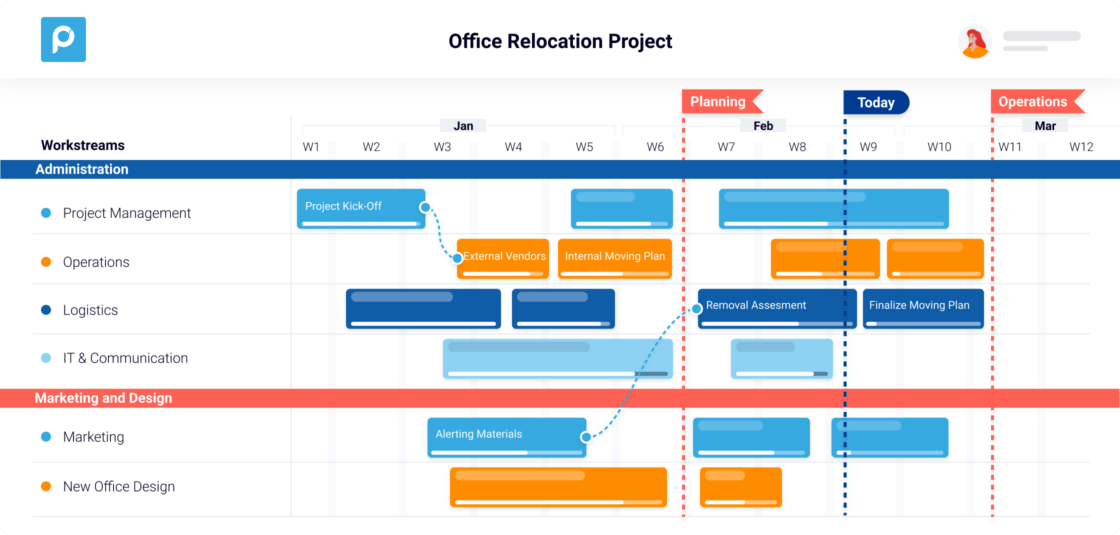Workstream Wonders: Unlocking Productivity and Efficiency

We have all been there…
One of the most frustrating things in life is when you can’t find something that you need. The stress you feel when you can’t find your keys as you are running out the door, when your credit card isn’t in its usual place in your wallet, or that important work email that just will not come up no matter how many different terms you type into the search bar.
We are busy people with busy lives. Just like how we can use tracking devices to track our keys, applications that freeze our credit cards when we lose them, and coworkers that can forward the email to us, it’s important that we have software that has our back.
What are the costs?
This is especially the case when it comes to project and portfolio management. Like any PM (project manager) or executive will tell you, complex projects come with heavy costs when organizations use PPMs (project portfolio management systems) that poorly organize activities and tasks in projects, don’t provide clear data visuals at the project and portfolio levels and weigh dependencies the same as each other.
According to Capterra’s blog, “there are three main reasons businesses become so dissatisfied with their current project management software that they search for new software altogether: inefficiency (49%), lack of functionality (31%), and difficulty using the software (26%).” (Source)
What are Workstreams?
Because Proggio was built by an industry-leading PM (Our CEO Yaniv Shor) for modern PMs and executives, these risks have been mitigated by the design and build of our Proggio platform. This makes us different from other solutions. One of these key differences is our Workstreams feature.
With any hierarchy of a project portfolio, Proggio is built on the following hierarchy:
- Portfolio
- Project
- Workstreams
With grouped:
- Activity
- Task

Proggio organizes this hierarchy and the real-time completion data visually. Other PPMs could say that they have a similar hierarchy; except Proggio has the workstreams feature.
Why Workstreams?
So why make our hierarchy different? Here are a few reasons why Proggio uses workstreams:
- Visibility- Workstreams enable users to put plans on the same page. Rather than grouping tasks in a waterfall format on a gantt chart, workstreams puts similar work in the same lane or sublanes (grouped workstreams) and organizes them side by side. This cuts the empty space when viewing a ProjectMap™ so you can see everything on a timeline, and in one screen.
That means no more scrolling to find the data you need because it is all in one place. Just like how a picture is worth a thousand words, a visual map for your project gives you the entire picture to make decisions fast, and no more wasted time looking for information that should be readily available.
- Organization- Our brains naturally group similar work together. For any project, there are common areas of work that need to be done. Workstreams helps you organize those planning concepts into common areas of work.
That means less wondering what task is where, and fitting your plan into a platform that isn’t intuitively organized to organize that plan. That means more time focusing on the actual planning and work that needs to get done.
- Dependencies- Dependencies come with various responsibilities and consequences. Because of the way most PPMs are built, they weigh risks in a more flat and equally weighted fashion.
Workstreams takes the dependencies and visually demonstrates the dependency lines so it is clear to see what impact each dependency has on other parts of the project. Because Proggio uses real time data, if you move an activity around that has a dependency in another workstream, the dependent activities will automatically move. If an activity has more dependencies, the more weight the activity has and will visually demonstrate that weight when the dependencies move.
This is one of the many intuitive automations that Proggio has built-in to save you time and therefore resources to change and adapt quickly because you can visually see the weight of a dependency.
- Cuts Down Communication Silos- When dependencies occur between one team’s tasks and another team’s tasks, the risk of costly miscommunication becomes very possible. Gantt doesn’t make connections between different teams and spreadsheets make it hard to assess the relationship of one part of a project to another and its stakeholders.
Workstreams eliminate the guessing and communication silos that other PPMs create and centralizes a communication location for each project. It also organizes the work into a coordination plan so that the platform can automatically highlight what are biggest risks, and where collaborating teams can mitigate those risks. So rather than looking at a screen where everything seems to have the same importance, Proggio’s workstreams automatically tells you what is the most important project data for you to focus on.
To sum up….
In our current economy, no organization, no person in any organization deserves to use a tool that makes it difficult to find their work, interpret their project data, or hamper their ability to mitigate risks. That’s why Proggio is unique, and different than any other tool that does not have workstreams. And since we are the only tool that does that, we take pride in being the one tool that gives you that confidence to find what you need, right when you need it. Want to hear more about our tool that works for YOU? Book a demo with one of our PM pros.